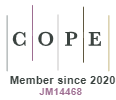Health Professionals and Organizations Lack of Awareness Regarding the Information Technology Resources Usage in Front of Their Major Beneficiary: Patients
DOI:
https://doi.org/10.5585/rgss.v3i1.82Palavras-chave:
Information Technology, Human Relationship, Health Services, Electronic Patient Record, Health InformationResumo
The entrance of the information technology within health organizations has been causing a true revolution, with new proposals in order to become a new practical facilitator on daily basis of health professionals. This article has the objective to evaluate the Electronic Patient Record (EPR) – ALERT EDIS – at a University Hospital. It has been evaluated a sample of 1,226 medical-cards from patients that have been served by 13 different medical specialties. In 95% of the medical cards there has been an insertion of a responsible and a 100% insertion of a diagnostics, and in only 0.32% there has been no anamnese nor external cause information (when applicable). In 9.54% of the medical cards there has been no evolution and in 31% the requested exams results were not described. Considering an overall, the EPR presents a good completeness from the majority of the evaluated items (-10% of absence). The EPR with compulsory field fulfillment is very valuable for its own quality with benefits to the patient assistance.Downloads
Downloads
Publicado
Como Citar
Edição
Seção
Licença
Copyright (c) 2019 Revista de Gestão em Sistemas de Saúde – RGSS

Este trabalho está licenciado sob uma licença Creative Commons Attribution-NonCommercial-NoDerivatives 4.0 International License.
Autores mantém os direitos autorais e concedem à revista o direito de primeira publicação, com o trabalho simultaneamente licenciado sob a Creative Commons Atribuição - Não comercial - Compartilhar igual 4.0 Internacional que permite o compartilhamento do trabalho com reconhecimento da autoria e publicação inicial nesta revista.
Autores têm autorização para assumir contratos adicionais separadamente, para distribuição não-exclusiva da versão do trabalho publicada nesta revista (ex.: publicar em repositório institucional ou como capítulo de livro), com reconhecimento de autoria e publicação inicial nesta revista.
Autores têm permissão e são estimulados a publicar e distribuir seu trabalho online (ex.: em repositórios institucionais ou na sua página pessoal) a qualquer ponto antes ou durante o processo editorial, já que isso pode gerar alterações produtivas, bem como aumentar o impacto e a citação do trabalho publicado (Veja O Efeito do Acesso Livre) em http://opcit.eprints.org/oacitation-biblio.html
- Resumo 112
- PDF 66




